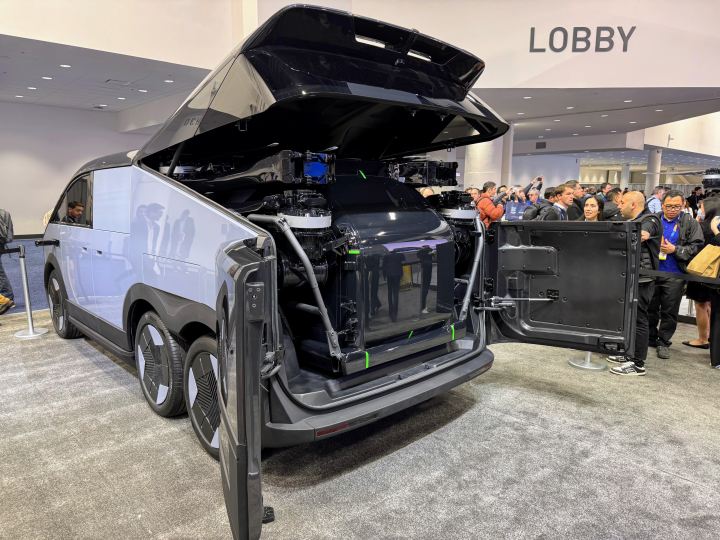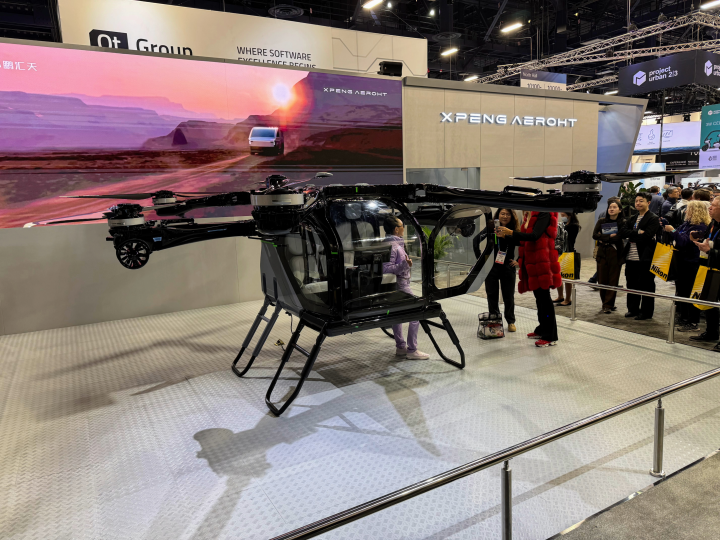The competition to become the most outlandish vehicle at CES is stiff: You have the swoopy solar-powered Aptera, electric RVs like the Lightspeed, and all manner of rideable electric gizmos. But Xpeng, a major Chinese EV manufacturer, put the rest to shame this year when it rolled in the Aero HT Land Aircraft Carrier (LAC), a six-wheeled monstrosity that does exactly what its name implies.
When a rear hatch swings open, the goliath LAC begins to disgorge its payload: a wadded-up, person-sized drone better known as an electric vertical takeoff and landing aircraft, or eVTOL. As it emerges from the rear storage area, the aircraft’s legs flop down like a newborn calf, and the van wriggles up and down to slide it out using its air suspension.

It’s not pretty or graceful, but the end result is no less impressive: a shiny six-rotor aircraft ready to fly. Xpeng says the craft, dubbed the “air module,” is easy enough for anyone to learn in five minutes, thanks to a single-stick design. It can also fly autonomously, and Xpeng claims that redundant systems allow it to safely remain airborne even if up to two rotors fail. There’s no word about a parachute as we’ve seen in other eVTOLs.
Who’s the customer for this kind of thing? Xpeng envisions families driving to scenic locations, then launching the module to explore at low altitudes. The company will even build “flying camps” along scenic routes to facilitate launches, but in theory the entire package is built to launch anywhere: All six wheels are powered for off-road performance, and the air suspension automatically adjusts to plant the air module on uneven ground. When a flight is finished, the van can recover the aircraft with one button, using sensors to intelligently back up to it and slide it back in place.

Both the air and ground module operate on 800V batteries, which we’ve seen in EVs like the Ioniq 5 and Porsche Taycan. The van has a generator to recharge both its own batteries and the aircrafts, and Xpeng claims it should be able to deliver up to six flights on a tank of fuel.
Please enable Javascript to view this content
If this all sounds a little hard to believe, we’re with you, but Xpeng already demonstrated the entire system at the China International Airshow in November. At CES 2025, nothing moved, but guests could pop into the air module cockpit to experience the 270-degree view for themselves.

Xpeng claims the LAC is scheduled for completion in Q3 of 2025, with deliveries expected to begin in 2026. No pricing has yet been announced.
